Cukes are the mouthwatering fruits enjoyed by all. But did you all know that a pest is named after this fruit?
Yes, it’s the “cucumber beetle” know after attacking the cucumber plant.
There are two common species of cucumber beetles – the striped beetle and the spotted beetle, that you may find in your garden which proves to be problems to the grown cucumber.
 The adult striped beetles are bright-yellow and have three broad, black stripes running down the length of their wing covers and are 1/4-inch long. Spotted beetles are greenish-yellow with black spots on the wing covers. Striped and spotted cucumber beetles can cause serious losses in cucumbers, muskmelons, and watermelons.
The adult striped beetles are bright-yellow and have three broad, black stripes running down the length of their wing covers and are 1/4-inch long. Spotted beetles are greenish-yellow with black spots on the wing covers. Striped and spotted cucumber beetles can cause serious losses in cucumbers, muskmelons, and watermelons.
Cucumber beetles are a major concern to muskmelon and cucumber growers because they vector the bacteria that causes a disease, bacterial wilt of cucurbits.
 Both species overwinter as adults in weedy areas and emerge in spring to mate and lay eggs. Though these newly emerged beetles don’t feed very much before breeding and laying eggs, their larvae burrow into the ground and feed on plant roots for several weeks.
Both species overwinter as adults in weedy areas and emerge in spring to mate and lay eggs. Though these newly emerged beetles don’t feed very much before breeding and laying eggs, their larvae burrow into the ground and feed on plant roots for several weeks.
Once these underground larvae complete their pupation, they emerge as adults. This is the generation that causes the most damage to gardens.
Adult beetles chew ragged holes in plant leaves and may consume entire cucumber blossoms. Unfortunately, newly planted, young seedlings can be consumed quickly.
Take Control Of Cucumber Beetles
By Lauren María Alexander|October 3, 2016
Striped cucumber beetle is known to cause major losses in cucurbit crops including cantaloupe, cucumbers, squash, and pumpkins. Because the beetle transmits the bacteria Erwinia tracheiphila, also known as bacterial wilt, managing damage caused by the pest requires a multipronged approach.
According to Shelby Fleischer from the Department of Entomology at Pennsylvania State University, adult beetles overwinter and feed on both the above- and below-ground portions of cucurbits including plant tissue, leaves, and roots. If you are growing large-flowered crops such as pumpkins or winter squash, beetles also will aggregate inside the flowers.
Striped and spotted cucumber beetles as pests of cucurbits in Michigan
Cucumber beetles are the primary insect pest of all vine crops in Michigan
May 31, 2017, by Amanda Buchanan
Striped and spotted cucumber beetles attack a variety of cucurbit crops, including winter and summer squash, cucumber and watermelon. While cucumber beetle larvae feed on cucurbit roots, adult beetles cause more economically important damage. Striped cucumber beetles are specialists on cucurbits while spotted cucumber beetles feed on other plants in addition to cucurbits.
Traditionally many pesticides have been used to prevent the nuisance caused by these insects but all of them have proved ineffective. The pesticides are not only harmful to the insects but also to the humans.
However, cucumber beetles also are responsible for a fair amount of cucumber pollination, so having those as a part of our ecosystem is necessary. So, killing them is not a solution to keep these pests away from the gardens.
The traditionally used pesticides and other ineffective methods are of no use to protect the cuke plantation from these pests and there is a need for an effective product to keep these pests away from the cuke plants!
At C Tech Corporation we offer a safe and effective solution to deal with these insects.
Combirepel™ is a non-toxic, non-hazardous product that primarily repels insects from the application. The best feature of this product is that it is environmentally safe and causes no harm to insects as well as for humans.
Combirepel™ product is available in the form of a masterbatch, liquid concentrate which is diluted in paints in a specific ratio and lacquer.
Combirepel™ is a non-toxic, non-hazardous broad-spectrum insect aversive masterbatch which works not only against the beetles but a host of other insects.
Combirepel™ masterbatch can be incorporated in different kinds of agricultural and gardening films, irrigational pipes, cables, and wires etc. and is found to be effective against the most aggressive insects.
To prevent the damage causing from cucumber beetles to your crops and plants films can be incorporated with Combirepel™ masterbatch which can be used to cover the area or mulches. These films can also be wrapped around cukes to prevent damage.
The liquid concentrate can be mixed with paints and be applied on the concrete fences around the gardens.
The lacquer can be used on the wooden fences or stem holders or metal equipment used in the cuke plantation.
All this can be done by just repelling the insect and not killing them. Thus, following the course of ecological balance and sustainability.
Also, visit our websites:
http://www.ctechcorporation.com/
http://www.rodrepel.com/
http://www.termirepel.com/
http://www.combirepel.com/
Follow our Facebook pages at:
1] https://www.facebook.com/Combirepel-411710912249274/
2] https://www.facebook.com/Termirepel-104225413091251/
3] https://www.facebook.com/Rodrepel-120734974768048/
Follow us on our Twitter pages at:
1] https://twitter.com/rodrepel
2] https://twitter.com/termirepel
3] https://twitter.com/combirepel

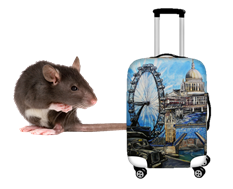 Rats and other pests are a common sight on railway tracks and platforms but having them as your travel companion is an unwanted experience. There are many instances for pests found in railway coaches and compartments and the pests are always spotted sooner or later.
Rats and other pests are a common sight on railway tracks and platforms but having them as your travel companion is an unwanted experience. There are many instances for pests found in railway coaches and compartments and the pests are always spotted sooner or later. Prateek Badvelkar and his family were travelling from Nasik to Bhopal in AC 2 coach of Udyognagri Express on July 29. This definitely was not a journey but a nightmare for the family as they faced a torrid time dealing with the bed bugs.
Prateek Badvelkar and his family were travelling from Nasik to Bhopal in AC 2 coach of Udyognagri Express on July 29. This definitely was not a journey but a nightmare for the family as they faced a torrid time dealing with the bed bugs. 




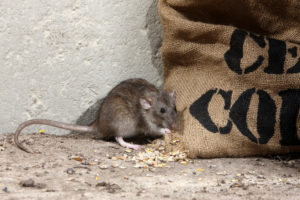 A country where starvation deaths and undernourished children fail to wake up the government from a deep slumber, a minute wastage of foodgrain is a crime. However, the awful condition in which the warehouses are maintained is a sign of why there is a massive wastage of foodgrain in the country.
A country where starvation deaths and undernourished children fail to wake up the government from a deep slumber, a minute wastage of foodgrain is a crime. However, the awful condition in which the warehouses are maintained is a sign of why there is a massive wastage of foodgrain in the country.

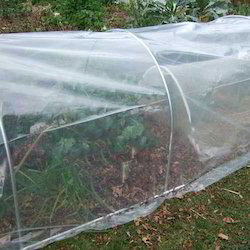
 It is surprising that many are unknown to a rodent called vole which is so widespread and poses a huge potential of causing an extensive damage to trees, lawns and gardens. They have even managed to put the blame for their destructive acts on moles, which do not even eat plants as voles do!
It is surprising that many are unknown to a rodent called vole which is so widespread and poses a huge potential of causing an extensive damage to trees, lawns and gardens. They have even managed to put the blame for their destructive acts on moles, which do not even eat plants as voles do!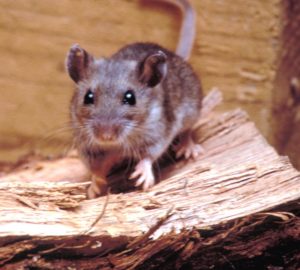 Excellent hearings, vision, smell and touch have enabled the house mouse to be highly adaptable to homes and indoor buildings. All they need is a 1/4″ opening to be able to enter a house, so they often have access to many places along the house’s perimeter.
Excellent hearings, vision, smell and touch have enabled the house mouse to be highly adaptable to homes and indoor buildings. All they need is a 1/4″ opening to be able to enter a house, so they often have access to many places along the house’s perimeter. House mice aren’t just a nuisance but a potential source of infections, say researchers who trapped and tested more than 400 of the rodents from apartments across New York City.
House mice aren’t just a nuisance but a potential source of infections, say researchers who trapped and tested more than 400 of the rodents from apartments across New York City.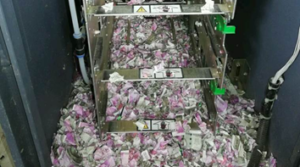
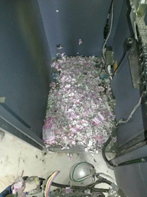
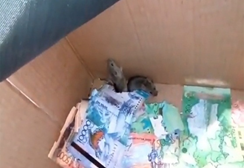 A pair of mice snuck into an ATM in the Kazakh capital Astana, hiding from a snow storm. Bank workers were surprised when they discovered the tiny intruders and the ruined notes they had munched on during their stay.
A pair of mice snuck into an ATM in the Kazakh capital Astana, hiding from a snow storm. Bank workers were surprised when they discovered the tiny intruders and the ruined notes they had munched on during their stay.